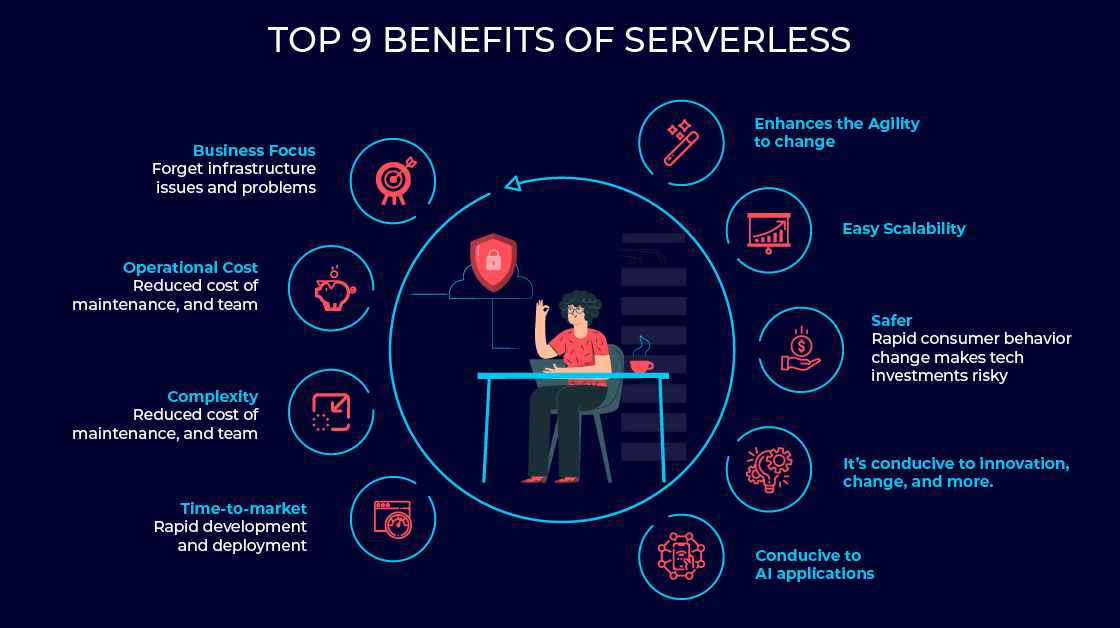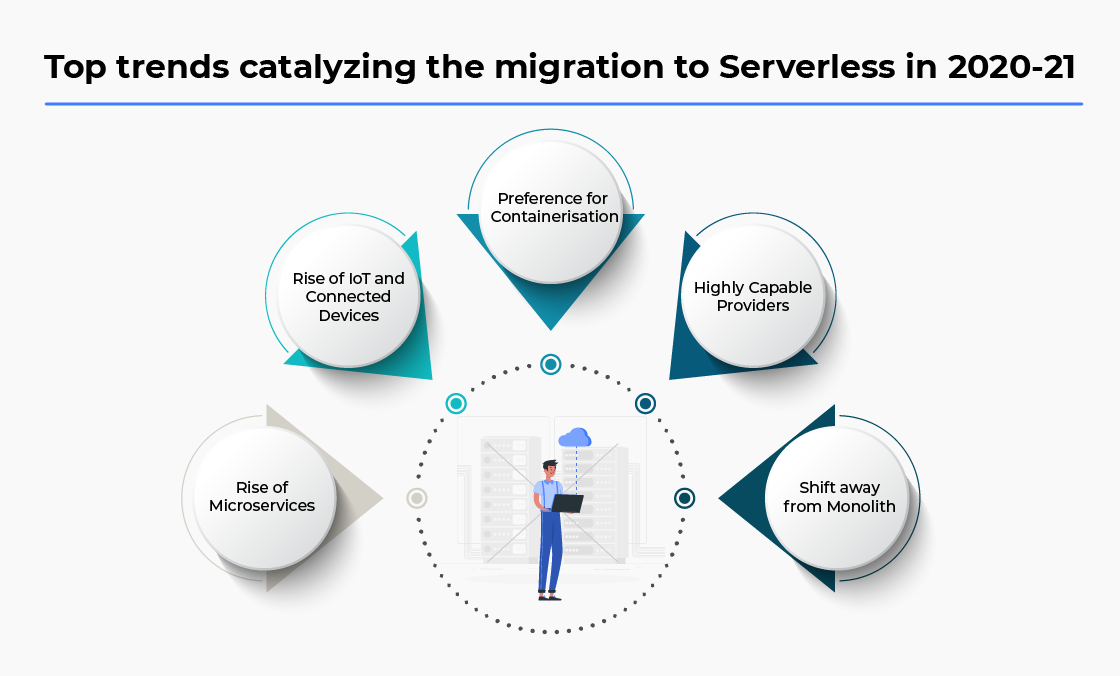In many ways we are at a unique inflection point in the history of information technology. In essence three factors have catalyzed the huge leap in the capability of organizations to harness technology, these are: APIs (What), Microservices Architecture (How) and Cloud Computing (Where) along with associated trends like DevOps.
Serverless Architecture is growing exponentially, but is it poised to become the standard way of development and hosting applications? Is Serverless the future? Let’s find out!
The highly mutable technology world demands a rapid response to changes and advancements, scalability, competitive costing, and low time-to-market, thus making them the threshold requirements.
If you are an organization developing a new app or are running an old one, familiarity with serverless has become vital. Organizations today have to decide whether they would go serverless or they will maintain their infrastructure.
Nitty-Gritty of Serverless Architecture
Since its launch in 2014, serverless has proved significantly disruptive in changing the way of hosting and development of applications. Serverless is a native cloud feature that allows organizations to run their applications while focusing only on the business logic, without being bothered about infrastructure management issues like Server, and capacity provisioning, high availability, fault tolerance, along with maintenance of the operating system, etc.
The Serverless can be subsumed, into two convergent areas:
- Backend as a Service (BaaS): In this model, developers use vendor provided software for server activities or behind-the-scenes applications such as user authentication, database management, remote updating, and push notifications (for mobile apps), as well as cloud storage and hosting. This enables developers to focus only on the frontend.
- Function as Service (FaaS): FaaS allows developers to deploy software as individual functions or as pieces of business logic. They engage when the function is called upon, and upon execution, the process ends. FaaS makes scaling of code easy and cost-efficient in the implementation of microservices.
Monolith Vs. Serverless Architecture
The monolith applications are easy to create but are rather difficult to scale and update. For decades applications have run on self-deployed servers that needed to be patched, updated, and monitored to avoid unexpected errors. The task is laden with a large responsibility. Serverless relieves one of these tedious tasks and transfers them to cloud vendors. Although there are a few situations where monolith architecture beats serverless.
Top 9 Benefits of Serverless:

Serverless comes with huge potential to reduce the
- Business Focus: Forget infrastructure issues and problems
- Operational cost– Reduced cost of maintenance, and team
- Complexity- Update only the specific smaller parts
- Time-to-market- Rapid development and deployment
- Enhances the Agility to change
- Easy Scalability
- Safer: Rapid consumer behavior change makes tech investments risky
- It’s conducive to innovation, change, and more.
- Conducive to AI applications
Enterprises have applications with complex functionality, compiled into one monolith cluster. For instance, ERP and CRM platforms; they are highly complex, with multiple dependencies; thus, the task of troubleshooting, scaling, upgrading becomes onerous. This has forced organizations to Serverless architecture.
There are a few disadvantages of serverless- it increases the reliance on vendors, compliance issues, and more.
Trends & Market Growth:
Indubitable proof of the popularity of serverless architecture is its growth estimates. Various estimates expect the market of serverless architecture to grow at an astounding CAGR of over 27% till 2026.
Serverless is already used in production by companies like Netflix, Coca Cola, Reuters, AOL, and Telenor. Netflix initiated their efforts to go serverless way back in 2009, and in 2016, they were able to shift totally to serverless with AWS Lambda.
The latest trends catalyzing the migration to Serverless are as follows:

- Shift away from Monolith towards more flexible Serverless.
- Shift towards more agile microservices, i.e., creation of applications at the minutest separate blocks. The inherent price advantage of microservices, pay only for what you use, creates value for both providers and users.
- The exponential rise of IoT systems and connected devices in the present hyper-competitive market have necessitated that the development process is agile to change.
- Preference for Containerisation, which is inherent to serverless architecture
- Highly capable providers are covering the entire software development lifecycle, making the transition or hosting decision relatively easy. Also, the players in Serverless architecture are the largest and the best in the world. Amazon Web Service (AWS) Lambda, Google Cloud Functions, Microsoft Azure Functions are the most dominant players in the market.
The above trends make the shift to serverless an exigent matter for most.
Why Serverless is the Future
The only situation where the recommendation of serverless is not desirable is when the application size is smaller. It would increase the complexity of developing it as well as the cost. In such a case, a traditional monolith, on-premise server is desirable. But in a fast-growth environment, where startups are looking for rapid growth, serverless then seems the obvious choice.
The technologies behind serverless would change, but its core concept would remain the same for the foreseeable future. The umpteen advantages of Serverless are for small and big applications alike, and they catapult its adoption in the contemporary technological ecosystem. For many years to come, Serverless is the way!
 All Posts
All Posts


